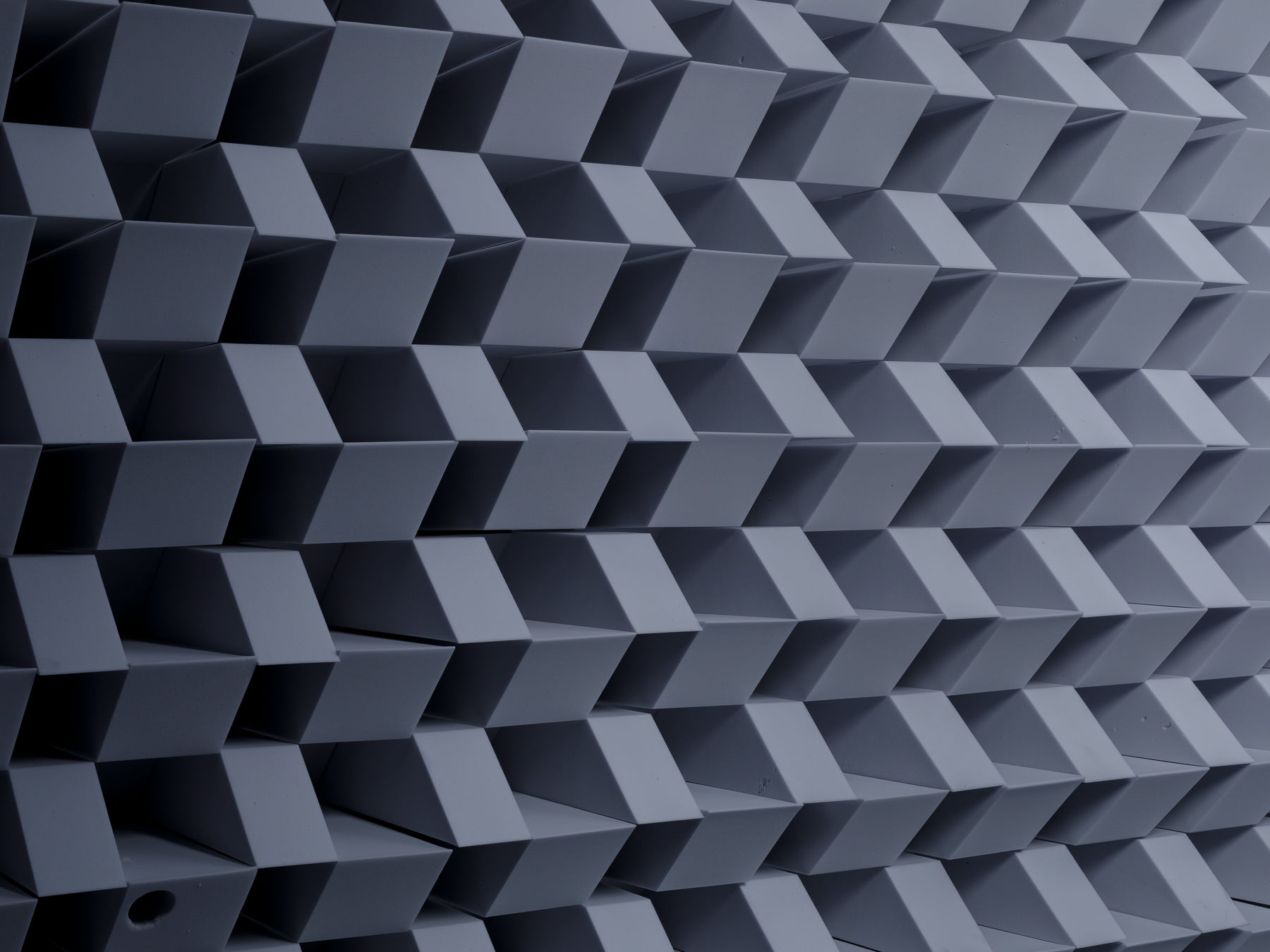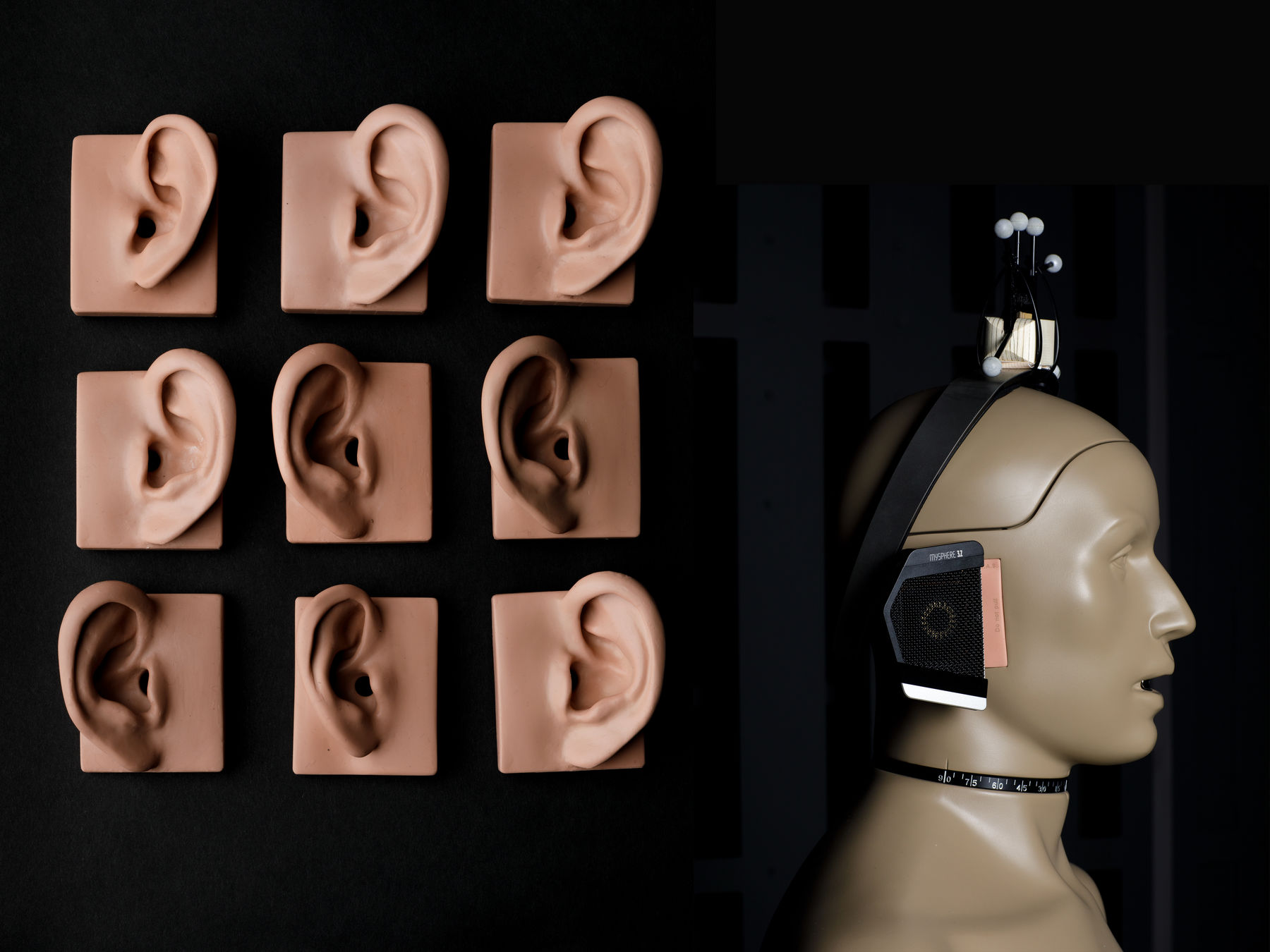BEYOND HEARING:
ACOUSTIC RESEARCH FROM INDUSTRY TO ENVIRONMENTS

Ville Pulkki: Super-hearing technology could be used to locate gas leaks and nuclear radiation sources
The Aalto Acoustics Lab focuses on advanced spatial sound research. The super-hearing technology they recently developed could be utilised in maintenance, rescue and security operations.
Humans have always been fascinated by the idea of enhancing their senses.
For years, the researchers at the Aalto Acoustics Lab have been working to do just that by developing super-hearing technology. The research group headed by Professor Ville Pulkki developed a device for listening ultrasonic sound sources, such as flying bats, providing abitility also to localize them by hearing.
The group built a set of headphones with an ‘antenna’ that ends in a small sphere. Ultrasonic sounds are recorded using a set of microphones flush mounted on the surface of the sphere. After the sounds have gone through signal processing, they are played back at audible frequencies. A novel aspect of the design is that the listener can also perceive the directions of the sound sources.
The new auditory dimension can make people and buildings safer. For example, it could be used to detect and locate gas leaks.
In addition to ultrasonic sounds, the super-hearing device could in the future be used to listen to electromagnetic or nuclear radiation. ‘These days, people go inside a nuclear plant holding a Geiger counter, but that only reveals the existence of radiation, not its direction. Our device, on the other hand, would also show the direction, which means that you could locate the source of the radiation immediately and steer clear of it,’ Pulkki says.
Pulkki believes that the technology could also be used to develop echolocation for humans. A portable device would produce inaudible sounds, and their reflections would provide information on the environment. This could be used as a mobility aid for blind people or, for example, in rescuing people from burning buildings.
Remote work is a challenge for the sense of hearing
The super-hearing technology that reveals the directions of sounds originates from spatial sound research, which is one of the focus areas of the Aalto Acoustics Lab. Pulkki, who dreamed of becoming a music engineer, ended up working in a joint project between the Helsinki University of Technology (HUT) and the Sibelius Academy in the 1990s. The project aimed to direct the multi-channel loudspeaker setup in the Chamber Music Hall with an 8-channel DA converter developed at HUT. Pulkki developed a method to determine how a sound signal should be applied to the setup so that the listener would perceive its position as desired by the mixing engineer.
The method developed by Pulkki is currently used in film and game audio technology, such as the Dolby Atmos system and Sony Playstation VR. The film audience can hear rain pattering on the roof and the gamer can hear the bad guy panting behind her back.
Professor and Vice Dean Vesa Välimäki says that spatial sound research has garnered more attention because of remote work. In virtual meetings, it’s impossible to distinguish between the participants based on the direction of the sound, which makes for tiresome listening. ‘In addition, current network connections don't allow for simultaneous speech, which is part of natural conversation,’ he adds. ‘Remote work would be less burdensome if we had access to a better remote presence technology,’
Professor of Practice Sebastian Schlecht is working on the development of video conferencing systems with the aid of multichannel audio and head monitoring technology.
Text by Terhi Hautamäki

The 1990s: Nokia’s rise gave acoustics research a boost
The Otaniemi Acoustics Lab did groundbreaking work in speech synthesis and speech acoustics in the 1980s. The dormant field blossomed with the growth of the mobile phone industry.
The pioneers of acoustics research in Finland, Matti Karjalainen and Unto K. Laine, started working together as tech students while experimenting with electronic music. During a wild weekend in a lab at the Tampere University of Technology, the two friends created fun sounds [some of them] resembling a human voice.
Professor Boris Segerståhl suggested that Laine and Karjalainen begin developing a machine that speaks Finnish. ‘We were eager to go along despite being total rookies in speech acoustics,’ Laine recalls.
At the time, text-to-speech synthesizers were cabinet size computers. An integrated circuit on a silicon chip had just come on the market, enabling Laine and Karjalainen to build a portable device, Synte 2, which aroused global interest.
In the early 1980s, acoustics research in Finland was still at its infancy. There were few tools and very little research. Despite this, the Otaniemi campus boasted three high-quality anechoic rooms.
Acoustics research gained momentum when Karjalainen (1946–2010) was appointed associate professor in acoustics in 1980 and full professor in 1986.
He was followed by his colleague and musician friend Unto K. Laine, who was the first to get a PhD in acoustics at the Helsinki University of Technology (HUT), in 1989. Laine served as Professor of Speech Technology at Aalto University until 2015.
In his dissertation at HUT, Laine improved the acoustics theory used in speech synthesis. The previous model had ignored the way in which sounds radiating from the mouth opening influence the resonance of the vocal tract – the area between lips and the vocal cords.
‘A device without a complex control mechanism and built according to the dominant theory over-amplified the open /a/ and /æ/ sounds, whereas the closed /y/ and /u/ sounds were too closed. They didn't sound like the same person’s vowels,’ says Laine. ‘The acoustic theory of speech production and its practical approximations needed improving.’
Computer simulations made by Laine provided a new perspective on the interaction between sound radiation and the vocal tract. This resulted in the patented vocal tract model PARCAS.
In the 1990s, acoustics research rapidly grew from a small field to the significant global position it now occupies.
‘Nokia had a pressing need for graduate engineers with an understanding of speech acoustics, speech coding and digital signal processing,’ says Laine. ‘We trained hundreds of engineers for the mobile phone industry.’
Laine says that Karjalainen, who headed the lab, possessed the courage to embark on new paths and to focus on topics that had remained relatively unresearched in Finland. Karjalainen took it upon himself to develop research tools that were not available in the early days of digitalisation and created software for sound and speech research.
‘We had a good, creative atmosphere. We were allowed to do, to experiment and innovate.’
In the 1990s, the university launched new research in psychoacoustics, room acoustics and music acoustics, among other fields, all of which now have their own chairs at Aalto University.
Text by Terhi Hautamäki